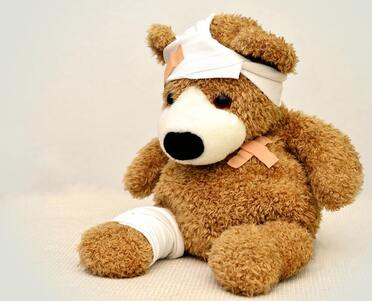|
Sooner or later, every child will fall and strike his or her head. Falls are especially common when your child is learning to walk. Most head injuries simply result in a scalp injury. Big bumps can occur with minor injuries because the blood supply to the scalp is so plentiful. For the same reason, small cuts on the scalp or face can bleed profusely.
Home Care Steps: 1) If there is a scrape, wash it off with soap and water. 2) Apply pressure with a clean cloth for 10 minutes to stop any bleeding. 3) For swelling, apply ice for 20 minutes. (Frozen vegetables such as peas work well or keep a wet sponge in a zippered bag in the freezer). For more serious head injuries, look for the following symptoms:
Call our office immediately if:
Comments
|
AuthorThe staff of Panda Pediatrics, located in Washington, D.C. Categories
All
Archives |
|
Schedule your visit today!
|
HOURSMon: 9am-5pm
Tues: 9am-5pm Wed: 9am-5pm Thurs: 9am-5pm Fri: 9am-2pm Closed daily 12pm-1pm. |
Phone: 202-466-5350
Fax: 202-466-8555 After Hours: 703-535-1856 Email: [email protected] Billing: 1-888-969-3735, option# 1 |
ADDRESS2440 M Street NW
Suite #422 Washington, DC 20037 POLICIES |

 RSS Feed
RSS Feed

